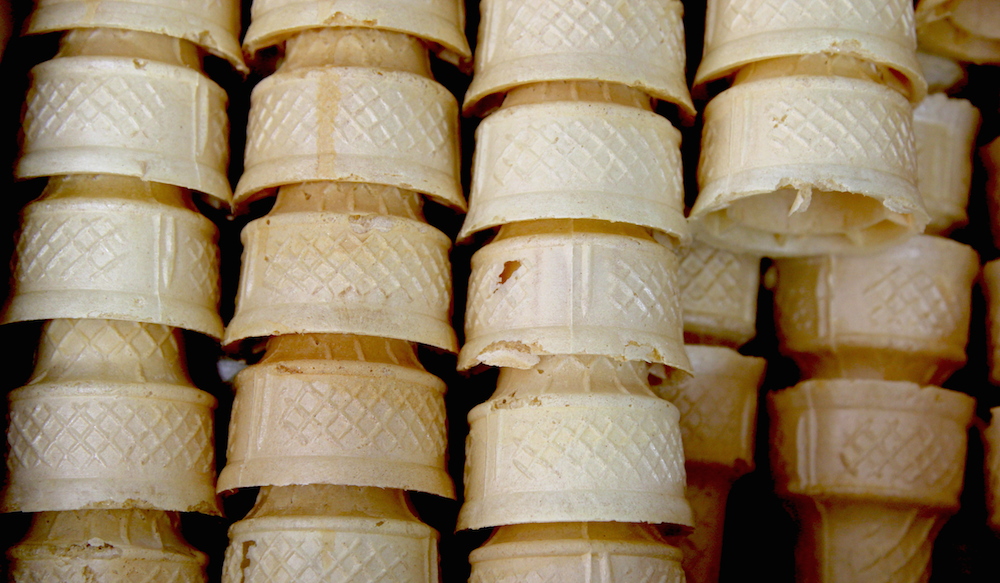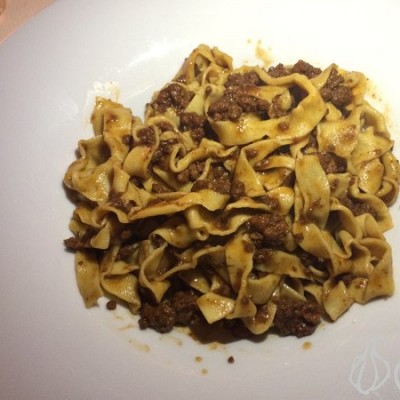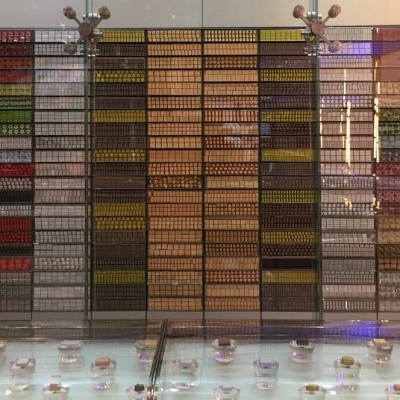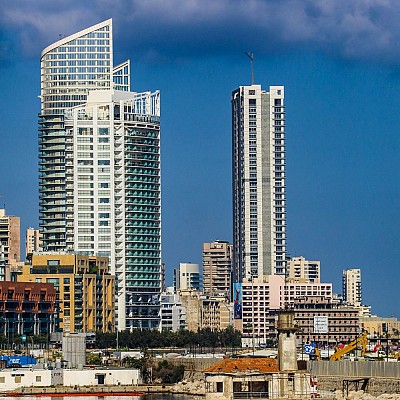The Food Heritage Foundation’s Zeinab Jeambey goes on a countrywide journey to discover producers still making Arabic ice cream the traditional way.
The history of ice cream making stretches back centuries and its evolution has been extensive to become the delicacy we enjoy nowadays. From ice flavored with fruit juices or fruit pulp or frozen milk sweetened with honey, fruits and nuts and thickened with starches, eggs or gums; endless were the combinations and techniques of ice cream making in ancient times. Despite its many evolutions, the traditional preparation of Arabic ice cream “Bouzet al Da’” can still be found across Lebanon.
The Arab world’s connection to ice cream can be traced back to a distant past; during the Arab reign in Andalusia, ice was brought from the Sierra Nevada Mountains around present day Granada and served as a delicatessen in the court of the Caliphs, the Islamic rulers of Arabic Andalusia. Flavored with fruit juices and sweetened with sugar or honey, it was a sought-after refreshment in the midst of the summer heat and was called sherbet, the precursor word of our current day sorbet. For the Caliphs residing in Damascus, ice was brought from Mount Hermon to cool milk during the process of ice cream making.
Originally, the rich ice cream, Bouzet al Da, was called Qaymaa al Arab. Arabs have a long history of raising cattle and have always been big milk consumers. Freshly collected milk was placed in containers to cool overnight, after which it was transferred to other containers for heating and pasteurization. Due to the coolness of the night, the inner edges of the original container would be covered with a thick cream lining. Producers would scoop it from the container walls with their hands, forming a shape resembling a cone of cream, hence the nomenclature Qaymaa al Arab; Qaymaa being the diminutive of Qomee or cone.
Unlike traditional ice cream in Europe, Arabic ice cream is thicker and more elastic. It consists mainly of milk, cream, salep, mastic gum and sugar. The combination of these ingredients produces a rich creamy taste and a gummy texture. Salep powder, extracted from the tuber of a type of orchid, helps the icecream thicken and adds flvaor. The mastic gum, a resin extracted from the mastic tree, is responsible for the chewiness as well as the flavoring of the ice cream.
 Bouzet al Da’, is a traditional version of Arabic ice cream, the name referring to its manufacturing technique, where milk that has been heated with salep, mastic gum and sugar is then frozen and pounded with a big wooden pestle until it reaches a thick, elastic consistency. To this thick mass, cream and pistachio are added. The ice cream is folded into a Swiss-roll shape, and coated with more shredded pistachio nuts.
Bouzet al Da’, is a traditional version of Arabic ice cream, the name referring to its manufacturing technique, where milk that has been heated with salep, mastic gum and sugar is then frozen and pounded with a big wooden pestle until it reaches a thick, elastic consistency. To this thick mass, cream and pistachio are added. The ice cream is folded into a Swiss-roll shape, and coated with more shredded pistachio nuts.
Lebanese cities and villages are abundant with signs of Arabic ice cream shops yet not all are the traditional Bouzet al Da’, though they still take the name Arabic ice cream. A stop at Bouzet Al-Nashawati in Khalde, 12km south of Beirut, sheds light on the details of Arabic ice cream making. “The uniqueness of [Bouzet Al-Nashawait] resides in the use of salep powder and mastic gum,” Ghassan Hamad, the store’s manager explains. “The difference between the regular Arabic ice cream and Bouzet al Da’ lies in the larger quantity of salep and gum used giving it a thicker consistency, and in the pounding technique, used only in the preparation of Bouzet al Da’ ”. The pounding time and technique – which defines the degree of firmness of the ice cream and thus its chewiness – remains the secret of the ice cream chef.
Founded by Mr. Mohammad al Nashawati in 1920, the Bouzet el Nashawati shop specializes in Bouzet el Da’, and produces and distributes all across Lebanon. The original and most common flavor of Bouzet al Da’ is ashta, or clotted cream, rolled in pistachio nuts. The small shop located in Khalde, experiments with unusual mixtures and flavors beyond the basic, such as Bouzet al Da’ made with chocolate, rolled in hazelnuts, or an original flavor made with mulberry or strawberry and rolled in pistachio or hazelnut. For lovers of the regular Arabic ice cream, an array of different flavors can be found such as pistachio, cashew, almonds, hazelnuts and ashta in addition to many fruit flavors with natural fruits used in the making. In the fruit ice cream, Al-Nashawati does not use milk.
From the coast to the heart of the Bekaa valley, the village of Saghbine hides a hidden treasure, the small-scale ice cream maker, Joseph Masrouaa's Saghbine Natural Ice Cream. He inherited the tradition of ice cream making from his father. Masrouaa is also the local barber and his ice cream shop and barbershop are neighbors. The small ice cream shop, located in the main street of the village, is low-key with the simple sign “Saghbine Natural Ice Cream. Lemonade”.
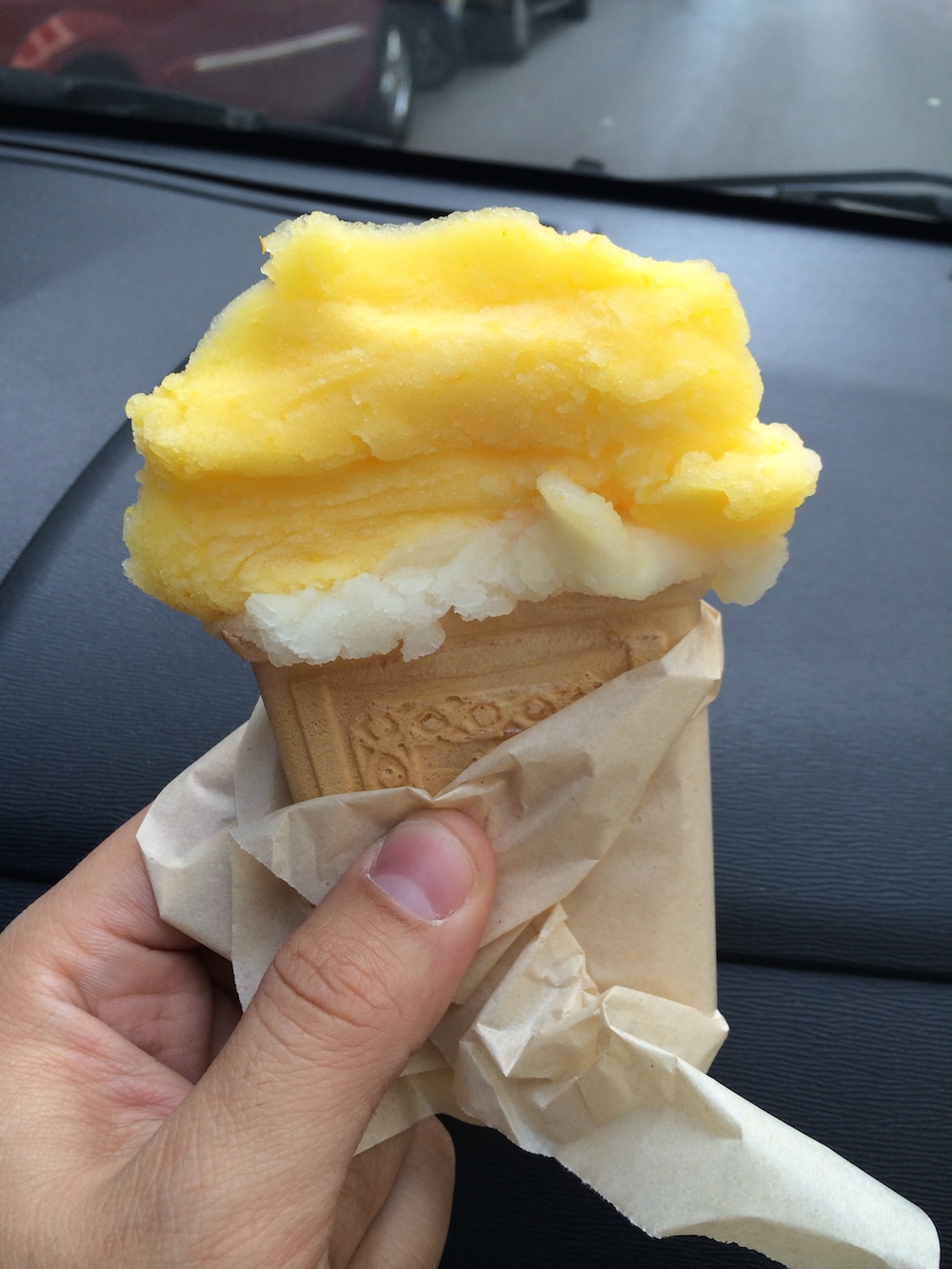
It’s not difficult to get Masrouaa talking about his ice cream-making passion. He quickly reveals a fact that sets his ice cream apart from many others; he uses fresh goat's milk from local farmers rather than from the milk of cattle, to prepare his ice cream, as well as fresh ingredients for his fruit and citrus flavors. As he fills cones of ice cream for tasting, the elasticity of the ice cream is visible. “The quality of salep used is key in achieving the desirable consistency of the ice cream,” Masrouaa explains. He insists that “the salep from Istanbul is the best!”
Masrouaa creates his basic mixture of milk with salep, mastic gum, orange blossom water and sugar. Processed in his ice-cream machine, this mixture develops into a milk-flavored ice cream, with rich, mouth-watering aromas of salep and mastic. To the original recipe he adds fresh blended fruits to create fruit-enhanced flavors. Saghbine Natural Ice cream shop’s flavors change with the season’s fruits – expect everything from almond, milk, chocolate, strawberry, pistachio, honeydew melon, watermelon, lemon and mulberry. And, his lemonade is as famous as his ice cream and totally worth a try.
Arabic ice cream remains one of the highlights of delicacies the Middle East has to offer, with vibrant flavors that characterize the region such as rose, ashta, pistachio and mulberry. With the summer approaching and the temperatures rising, we invite you to hunt out the hidden frozen gems across the country. Explore the traditional small-scale ice cream producers from village to city and taste for yourselves. This ancient tradition is still alive and well in Lebanon and in its taste the food heritage of the past lives on.


















